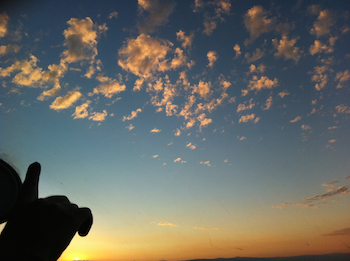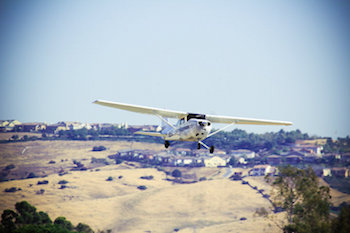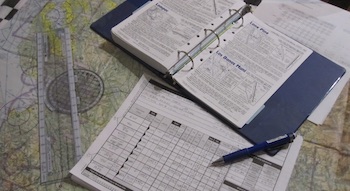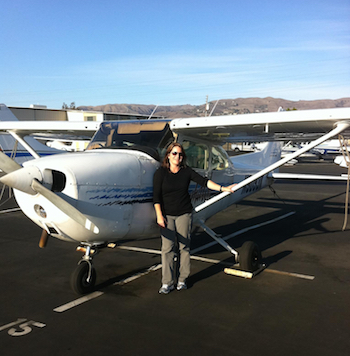Private Pilot

Have you always wanted to fly? Did you grow up thinking the way airplanes lept into the air was magical? Do you want to explore California and more but just don't have the time to get very far on the weekends? Maybe you are tired of sitting in traffic for hours on a Friday night to get to Napa or Santa Rosa or Lake Tahoe? Do you have to do business in the central valley or Southern Californa on a regular basis and prefer to skip the two hours just getting to the airport and through airport security?
The Private Pilot Certificate opens up all of these options to you and more. From making business travel more efficient, to family vacations to fantastic places with amazing views, to the proverbial $100 hamburger, to simply experiencing the joy of flight, what you do with your certificate is up to you. Regardless of your reason to fly I will work with you to design a training program that accomodates your busy schedule and meets your goals.
What's the best thing about becoming a pilot? The sense of accomplishment you get when you have that airman's certificate in your hand. The incredible and unique experience of taking to the air with wings of your own, aboard a flying machine that is yours to command. The confidence that flying creates when you know you've accomplished something very few people even try. And finally, the very best, taking family and friends up in the air and sharing that unique pilot's view of the world. There are plenty of practical applications to flying but the experience of flying itself is priceless!
What does it take to become a pilot?
The Short Answer
In short, you need to be of good health, be at least 17 years of age by the time you test, have a minimum of 40 hours of flight experience with 20 hours of flight training, receive ground training, take a written test and a practical test. Most people say if you have the coordination to drive a car with a stick shift, you can fly an airplane. The nice thing is, you don't have to own a plane to train for your pilot certificate.
The Long Answer
Similar to a teenager earning a driver's license in California, Private Pilot training has different phases that all pilots progress through from their first flight to the happy day they receive their temporary airman's certificate.
First Flight

The first flight (also known as a Discovery Flight) is a memorable experience for every pilot. In the first flight lesson you learn about the science (some call it magic) of lift that puts and keeps airplanes in the air. You learn how these things called "flight controls" allow the pilot to control the aircraft's motion through the air. The very best part of the first flight is that moment when I hand you the controls of the aircraft and you fly! You also will receive your own pilot's log book at the end of the flight. I charge $180 for this first flight which includes aircraft rental, ground and flight instruction and your pilot's logbook.
Pre-Solo
During this period you learn the knowledge and skills to fly an airplane including straight and level flight, turns, climbs and descents. You'll learn how to take off and land and how to manage the plane in normal and abnormal conditions. You will also learn the rules that govern flight in and around your home airport. Once you've successfully demonstrated these skills and knowledge to your flight instructor you will go on to the next phase. You will also need an FAA Medical Certificate and Student Pilot Certificate before you can fly solo. I will guide you through the process to obtain both certificates.
Solo
After completing two supervised solo flights (this is where the flight instructor observes your flight closely from the ground as you fly alone in the plane) you will be endorsed so you can spread your wings and practice flying on your own. You will continue to practice flying solo until you earn your private pilot's certificate.
Post Solo / Pre Cross Country

In this phase you start to see the practical application of what you've been learning so far. You learn how to plan to fly cross country to other airports and cities. You learn about weather, aircraft performance, aeronautial charts and flight planning tools. You will also learn how to do special styles of take offs and landings that will ensure you can land at a wide variety of airports. We will fly a couple cross country flights together for you to practice your flight planning and navigation skills. Finally you will also get to experience the rare beauty of night flying. During this time you should also start studying for the FAA written test.
Solo Cross Country
This is where it all comes together! You get to choose a destination (within reason) and plan and execute a cross country flight solo. In this stage we do two solo cross country flights, one relative short flight and another longer flight. Both are designed to expose you to the joys and challenges of flying to airports you've never been to before.
Refinement and Preparation
At this point you've met all of the training requirements to become a private pilot. By this time you need to have taken and passed the FAA written test. Now we will work together to refine your aeronautical knowledge and flying skills in preparation for the FAA Practical Test. We will practice the required maneuvers and ensure you have the aeronautical knowledge and skills to be a safe and proficient pilot after you get your certificate.
Check Ride
The FAA practical test, also called the Check Ride, is where you get the opportunity to demonstrate to a Designated Pilot Examiner (DPE) or Aviation Safety Inspector (ASI) your knowledge, skills, and most important judgement as pilot in command of an aircraft. They will evaluate you objectively against established standards that all pilots must meet. You will be very well prepared for this event. After successfully completing the practical test you will be issued a temporary airman's certificate that will grant you all of the priveleges and limitations of a private pilot!
The FAA Answer
Here are the FAA minimum aeronautical experience requirements to earn a private pilot certificate as defined by FAR 61.109(a). In addition the pilot must have received and logged the flight proficiency training specified in FAR 61.107(a). The training process I described above encompasses all of these requirements.
- Total Minimum Time
- 40 Hours Total Time
- Training Hours
- 20 hours of dual instruction including...
- 3 hours of cross country flight in an aircraft
- 3 hours of night flight (including 1 cross country flight and 10 take offs and landings to a full stop)
- 3 hours of flight by reference to instruments
- 3 hours of training in preparation for the check ride
- Solo Time
- 10 hours of solo time in an airplane including...
- 5 hours of solo cross country flight
- 3 take offs and landings at an airport with an operating control tower
There are a few additional requirements to qualify for the Practical Test.
- Knowledge
- Receive and log training covering the aeronautical knowledge specified in FAR 61.105(b).
- Minimum Age
- 17 Years (no maximum age!)
- Language
- Read/Write/Speak and Understand English
- Written Test
- Pass the FAA Written test within 24 months
- All "deficiencies" found in the written test reviewed and corrected.
- Prep Training
- 3 hours of training in preparation for the check ride within 2 calendar months of the practical test
- Medical
- Minimum of a Class 3 FAA Medical
How Long Does It Take to Become a Pilot?
The FAA minimum aeronautical experience is only 40 hours. The average amount of hours for a pilot to earn their certificate in the Bay Area is closer to 80-90 hours. In part this is due to our complex airspace. You may think it would be better to train elsehwere, however, training in this airspace is acutally an advantage. Once you've learned how to fly in the San Francisco Bay Area you can fly almost anywhere in the United States with confidence and skill.
Realistically someone who is not a full time aviation student (e.g. someone with a day job and a family) will take around 9 months to a year to go from first flight to practical test. Some will progress more quickly and some will take longer. However, if you plan on a year for your training you are likely to be pleasantly surprised if you finish more quickly.
Ultimately the amount of time it takes to get a private pilot certificate varies widely depending on several factors.
- How well you prepare for your lessons. There are knowledge and flight skills to be learned. People who study at home can reduce the amount of time spent in ground training. If you don't have the time to study at home we will have to cover additional materials together on the ground.
- How frequently you can train. Training three times a week is optimal. For best results and minimum frustration I require my private pilot students to commit to training twice a week. This allows us to make progress in spite of the occasional cancellation for weather, vacations, business travel and meetings.
- Strengths and Weaknesses. Every pilot brings unique strengths and weaknesses to their training. Some are "naturals" at what we call stick and rudder skills but struggle with gaining and applying the knowledge required to be a safe pilot. Others may be strong with the knowledge but struggle with particular maneuvers. Most pilots will struggle in a couple areas and do very well in others. Being aware of your own strengths and weaknesses and being willing to work with them will help you move more quickly through the process.
How Much Does it Cost to Become a Pilot?
The cost to earn your private pilot certificate depends very much on you, how well you prepare for your lessons and how quickly you learn the required flying skills and aeronautical knowledge. As mentioned earlier, you can accelerate your progress (and lower your cost) by preparing and studying before each lesson and by flying at least once a week. The last factor, how quickly you will be able to learn, is the hardest to predict. Every pilot is different and will progress at different speeds in different portions of the course of training. That being said I can give you some data to estimate your cost.
The following assumes you join a flying club rather than purchase your own aircraft for your training. The entry cost for aircraft purchase will be significantly more than below. If you already own your own aircraft use your own operating costs for the per hour flight time and remove the cost of the club membership.
Fixed Costs
- Materials
- Approx. $250 includes...
- Jeppesen Private Pilot textbook
- Current FAR/AIM
- Current Aviation Sectionals and Chart Supplement
- Plotter and E6B or E6B App
- Aviation Medical
- $125
- FAA Written Test
- $150
- FAA Practical Test
- ~ $700
Variable Costs
- CFI Time
- $70 per hour. Expect 2.5 - 3 hours of CFI time per lesson.
- Aircraft Rental
- $115-$125 per hour of flight time (includes fuel)
- $395 for one year flying club membership - at a flying club
- $12 per month insurance fee - at a flying club
- Headset
- $125 - $1000 depending on budget and personal taste
What Will I Fly?

If you have your own aircraft obviously we would fly that! However, most people starting off on their flying adventure don't own their own aircraft. This is actually, in my opinion, a good thing. This gives you the opportunity to sample different aircraft types. Learn more about the type of aircraft that's best for your typical mission and, it will save you money. Yes, this is an area where it costs less to rent than to buy.
Normally when starting to learn how to fly you want to fly a plane that is inexpensive and easy to fly. Most people start off flying a Cessna 172 or a Piper Warrior. These planes typically rent at or less than $125 per hour including fuel. We can discuss the plane that's right for you when we first meet.